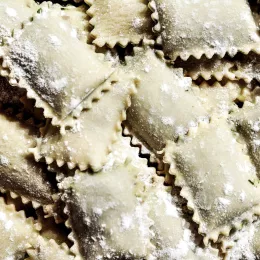“During the Qin Dynasty, a scholar was studying for an exam. He went to a park on an island to study. The scholar’s wife wanted to bring him noodles for lunch and she had to cross the bridge.” Simone Tong (Culinary Arts, Culinary Management ‘11) was filling me in on the legend behind “crossing the bridge noodles,” also called mixian (mee-syan), the Yunnan province specialty that New Yorkers are eagerly slurping at Simone’s new East Village restaurant, Little Tong Noodle Shop.
“She discovered, because she was very smart — smarter than her husband, obviously,” Simone continued, with a chuckle, “that a layer of chicken fat covering the broth would keep the noodles hot while she crossed the bridge. And then she cooked the raw food in the broth once she arrived.”
Ingenuity, it turns out, also finds its way into the kitchen of Little Tong, where Simone’s impeccable technique and reverence for each ingredient is met with her own brand of creativity and humor. The result is dishes like the “Lijiang old town grandma-inspired” Grandma Chicken Mixian: an addictive combination of light chicken broth, tender chicken confit, black sesame garlic oil, tea-steeped eggs, house-made fermented chili and pickles, finished with a smattering of bright flowers.
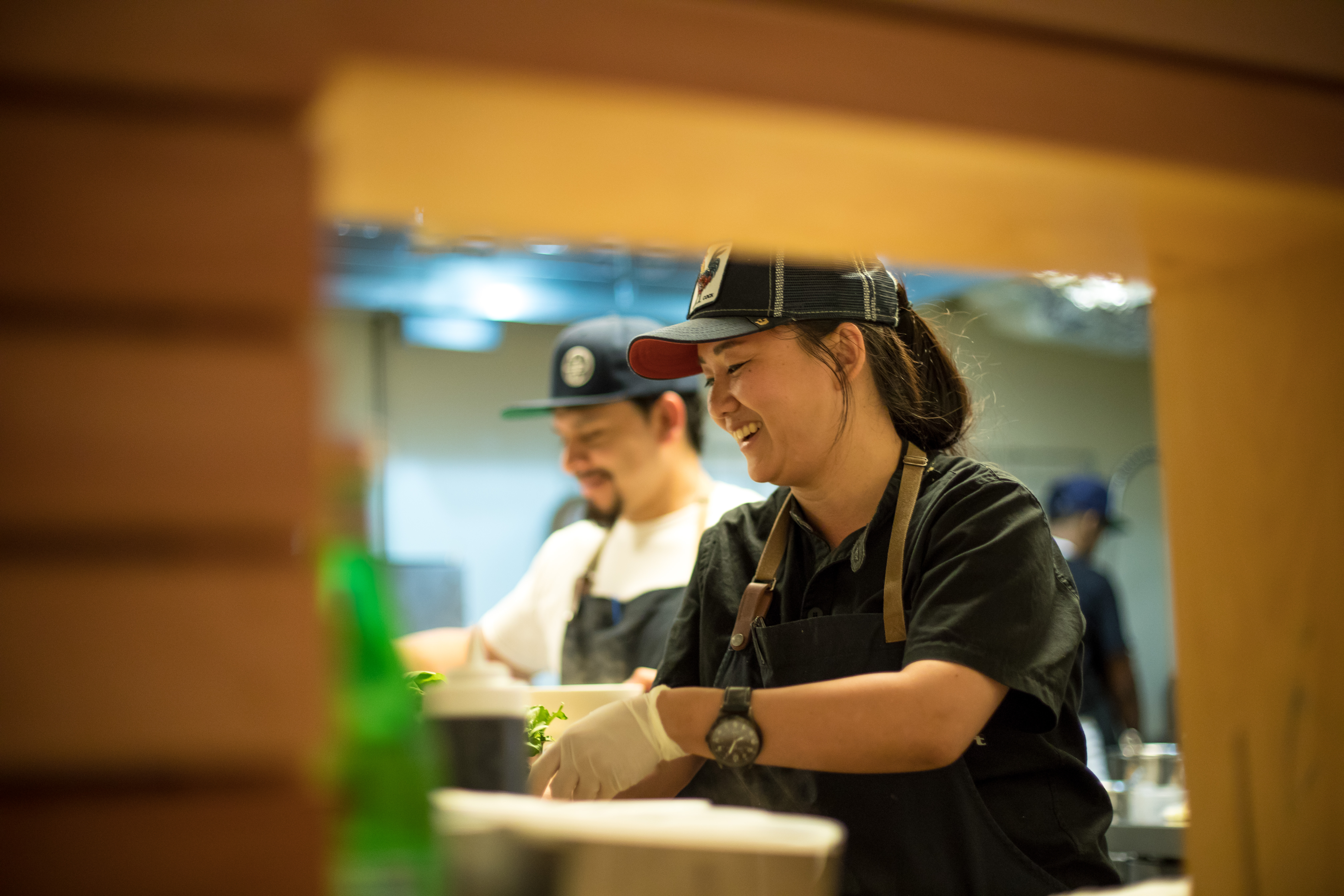
Simone, who cooked with Chef Wylie Dufresne at wd~50 for nearly five years, explained, “I want my food to be seriously tasty, but also have a hint of elegance, a hint of humor and a hint of surprise.” On a recent Wednesday morning, while the shutters of Little Tong were still drawn, Simone and I chatted about her path from the kitchens of ICE to wd~50 to her own bustling downtown restaurant.
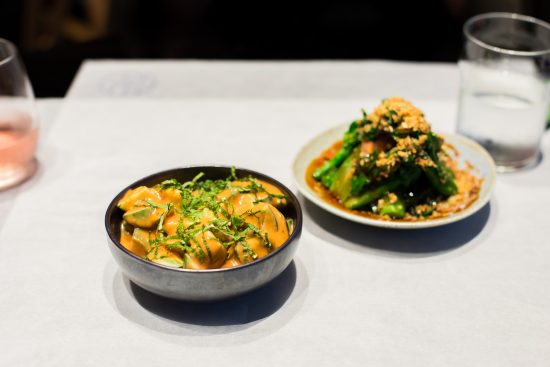
What inspired you to enroll in culinary school?
The first real inspiration came from my mom. My parents are art dealers, so they had a lot of beautiful paintings. My mom had the idea to create a restaurant where they could hang some of their paintings, mostly renaissance period, and she could sip coffee all day. She had no idea what owning a restaurant entailed, so she hired a chef and opened a restaurant called Café Firenze.
One day a French chef walked past the restaurant and he thought the restaurant was decorated in good taste, so he wanted to become the chef. I was home from college for the summer, so I helped translate his French-accented English to my mom in Sichuanese. He went into the kitchen and started cooking these beautiful, classic French dishes like tomato concasse. That was my first inspiration.
Then after I graduated from college, I saw a show called “After Hours with Daniel.” Chef Daniel Boulud would visit different restaurants, talk to the chefs and bring his own ingredients. The first episode of the first season was wd~50 with Chef Wylie Dufresne. I was so wowed by it — the combination of art, science, cooking and food. It seemed so fun to be a chef. You get to sit around, drink, talk about food, taste food. I did extensive research. Where is wd~50, how do I go there, how do I learn what they do? Then I researched the different culinary schools in New York and I visited three of them.
I realized I could get two degrees from ICE — Culinary Arts and Culinary Management, which economically made sense. The other big factor was that at ICE, we would do an externship. So I decided to enroll at ICE. I wrote my first cover letter to wd~50 — I knew I was going there.
Did you use what you learned in ICE’s Restaurant & Culinary Management program to open your own restaurant?
The thing about New York is it’s so crazy. I don’t think you’re ever prepared to open a restaurant — you just do it. But if you’ve never been in the industry, you want to learn from a school that draws the best examples of how to run a business. And that’s what they do at ICE.
How did you know it was time to open your own restaurant?
I always wanted to open restaurants. But the opportunity came when a mutual friend introduced me to my business partner, Simon Xi. His background is more finance — very numbers-driven, which is a huge contrast to a chef. But we shared a passion for opening a restaurant that served modernized Chinese cuisine, to bring new memories to New York. We wanted to build upon our memories of Chinatown and Chinese takeout and lo mein.
Little Tong is on the same block as Momofuku Noodle Bar – does that draw comparison?
Sometimes. Food writers either say it’s similar but a different style, or they say “good for her for being so close to this legendary icon.” I worked for Chef David Chang briefly, but we also met when he came to wd~50 from time to time. He’s been very generous and very kind to me. He sent me a text to congratulate me and brought beers over.
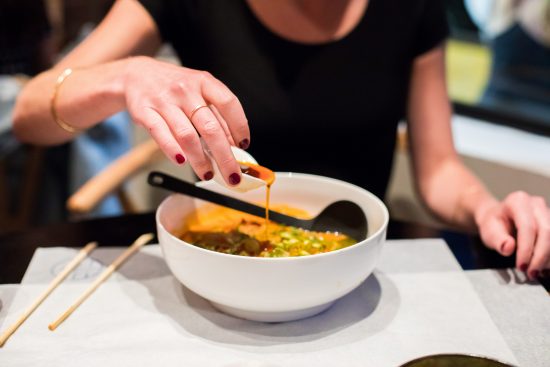
Tell me about your style of noodles.
They’re called mixian (mee-syan): it literally translates as rice threads. It’s from the Southwest region, a Province called Yunnan, which translates as southern cloud. It’s a very beautiful place, almost like a fantasy world. Not many people have discovered it; people in China only started traveling there in the 1990s. Now it’s popular, because people talk about how beautiful it is.
I was born in the Province next to Yunnan, Szechuan, which is known for spicy cuisine. I didn’t truly discover Yunnan until my research last year — I was there for 3 months — but my passion for mixian developed when I was very young. Mixian is like the foster child of Yunnan cuisine.
Everybody knows about mixian in the rest of China. Even restaurants in New York, like in Chinatown or Flushing, serve mixian or “crossing the bridge” noodles. It’s a bowl of rice noodles with 20 plates of different ingredients, and you dump what you want in — kind of like Vietnamese pho. In China they add raw chicken, pork, fish or beef; then some sausage, pickles, lots of vegetables, boiled eggs and tofu. That’s what I grew up eating. You can find this in New York, but there’s not as much raw protein because of health department regulations.
I don’t think food should be something just to show off your technique. It should be wholesome. It should make you smile when you eat it.
What do you add to this traditional dish?
All of the dishes on our menu are inspired by dishes from the region and recreated in our own way. A classic example is the Grandma’s Chicken. It’s our most popular, most written-about dish. I discovered Grandma Chicken at a restaurant that only serves chicken mixian in Lijiang, an old town in Yunnan.
We spun that dish around and did something new. We cook the broth for 36 hours. We sear the chicken skin so it’s more dynamic in flavor. We add a lot of aromatics and we also make a black garlic oil with black sesame so it’s toasty and aromatic. We ferment our own fresh chili and cook the chicken in its own fat, which is what they did in Lijiang as well. We use antibiotic-free, cage-free chicken. Then we add a tea egg that’s been steeped in tea and spices, and finish with fresh flowers.
If you look at the dish, it’s very spring, it’s very Yunnan. But the flavor is reinvented slightly.
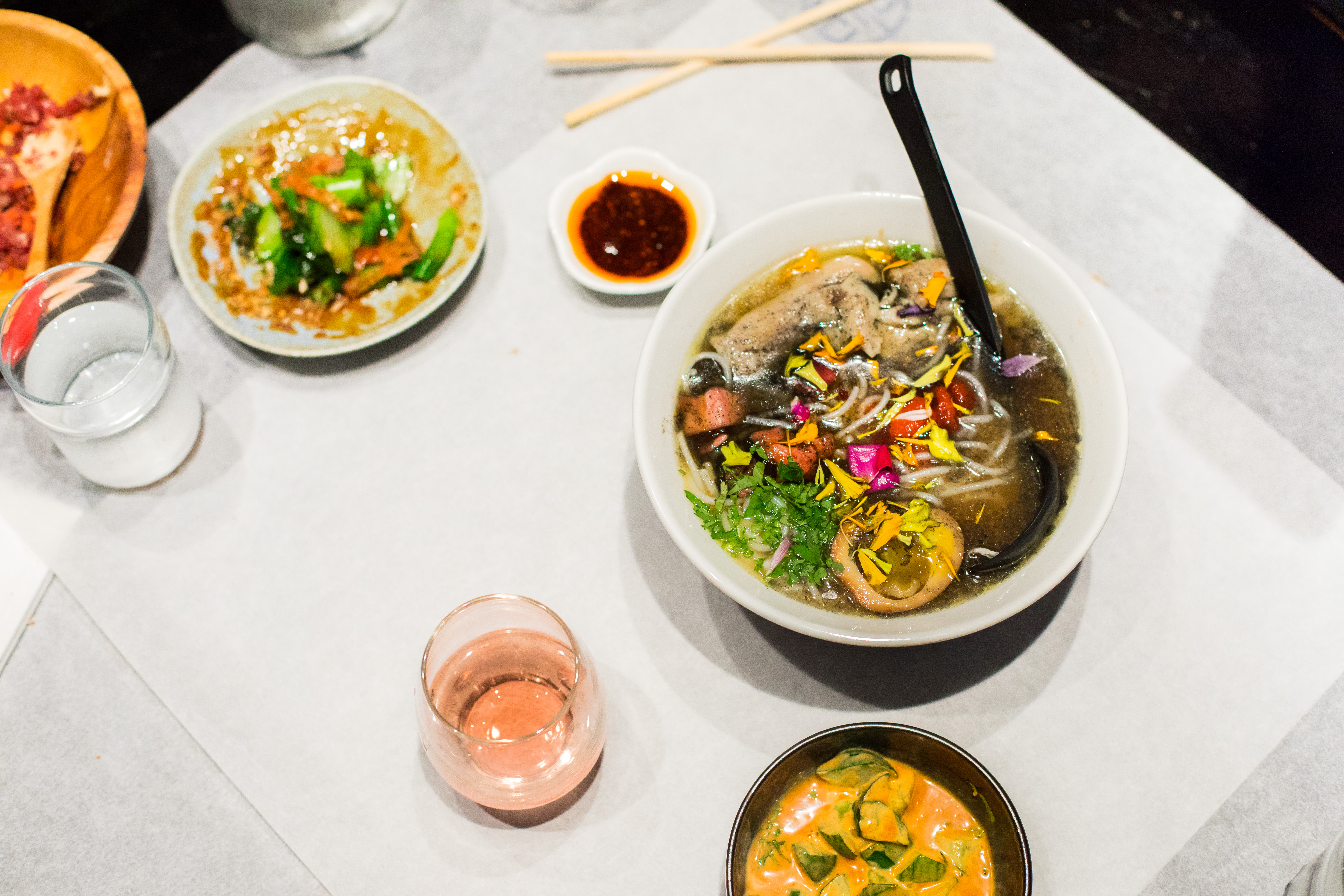
Do you have any advice for people opening their first restaurant?
With millennials, you can’t be hard on them and chastise them. They will just quit. They don’t see value in putting their head down and working. Inspiration is really the thing and a little sense of humor. [Ed. note: a waitress on duty when we visited the restaurant confirmed, “Simone’s hilarious.”]
Sometimes you walk into the kitchen and you can sense that everyone is mad at each other — you can feel the passive aggression. How do you turn this passive aggression around? I’ll find myself shouting orders and they’ll delay five seconds in reading them back. Then I realized I need to try to relate to them and say something humorous to bring them out of their own misery. Refresh them. Then let’s get back to work.
Sometimes, though, you have to tell them directly what’s the right thing to do. I have no problem being direct. I think the most difficult part of having a restaurant is managing the people. How do you build a team from strangers? How do you make sure they’re professional? How do you make them do the right thing? How do they carry the spirit of your restaurant and keep the energy up? It’s everyday mentoring.
We’ve changed about 12 dishwashers now. It’s crazy how hard it is to find a good dishwasher — someone who consistently shows up to work. That’s a challenge. It’s all about the people and how to get them to produce the same quality every day.
What is your culinary voice?
I used to watch that show “So You Think You Can Dance,” and I always liked when the ballet dancers turned into break dancers and changed the genre. I want my food to be seriously tasty, but also have a hint of elegance, a hint of humor and a hint of surprise.
I want to create something more amusing than serious. I don’t think food should be something just to show off your technique. It should be wholesome. It should make you smile when you eat it.
Ready to hone your culinary voice? Get more information on ICE’s career training programs.




